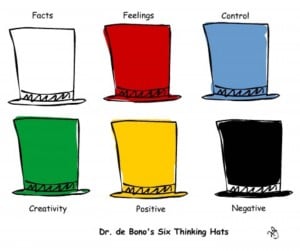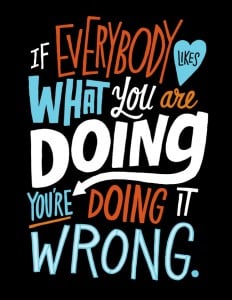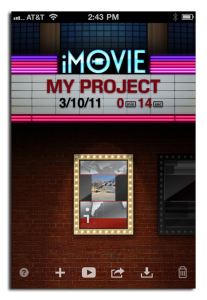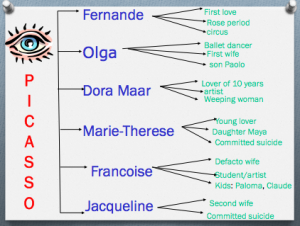FUN?
Yes, it can be if you know how you like to learn things.
Check out this link for some ‘fun’ ideas to get you started.
Let me know what you think or if you want more ideas to suit your learning.

FUN?
Yes, it can be if you know how you like to learn things.
Check out this link for some ‘fun’ ideas to get you started.
Let me know what you think or if you want more ideas to suit your learning.
 I’ve now spent way too many days thinking about this – I guess in hindsight, now that I begin to write this article, I should’ve used the hats – just came to me then!
I’ve now spent way too many days thinking about this – I guess in hindsight, now that I begin to write this article, I should’ve used the hats – just came to me then!
WHITE: Edward de Bono first published his book on the Six Thinking Hats way back in 1985. When he first designed them de Bono had no idea how widespread and rapid the phenomenon would be. De Bono is credited with coining the phrase ‘lateral thinking’.
There are a number of bloggers having a great old time debating the issue of the validity of the hats. There are also bloggers who support them. These articles are very entertaining – in fact they kept me up half the night reading them, along with the barrage of comments they received from others.
RED: I feel that these hats have had quite a pounding from people over the years. Seems to me that we always feel the need to correct, make it better or dismiss it right away based on other’s experience. We tend not to nut it out properly and if it doesn’t work the first time well it’s not worth it. Actually I think after all this that I much prefer the way I use the hats –
regardless of how they were intended. I know! Imagine being different. At first when I realised that it wasn’t exactly how de Bono intended them to be used I thought, hey they are a tool that I could use my way to enhance the learning of my students and by the way – I’ve also used them with adults AND will continue to use them for my own selfish reasons. There I’ve said it!
I agree with bt0558‘s comment; “I have no problem with any teacher choosing not to use a technique/strategy as they aren’t convinced, however to suggest that there is no value in a technique and that a technique is silly is to cast doubt on their judgement and their professionalism in my view.”
YELLOW:The hats have certainly enhanced my students’ thinking – yes there would probably have been some other strategy that would have done the same but we use the hats and they work. One of the rules I have using the hats is that when under the hat, regardless of what colour, you have total immunity in what you say and think. It is an opportunity for the student or adult to express what it is they wish to say whilst under a hat – and no you don’t have to wear it!!!. I find it most useful to use the hats as a way to evaluate a class, a theory, a professional learning experience. My youngest daughter used them to complete a book review many years ago. It was such an interesting approach; she was so excited about the process and eventual learning that came from it that I have always remembered it.
BLACK: This is the most essential hat in that t keeps everyone on their toes. This is where the devils’ advocate resides and they are the ones who keep everyone else honest.
GREEN: As I commented earlier – I tend to use the hats in a number of different ways. I have an old fashioned laminated version of six different hats that I like to have on me for all classes and professional development sessions. I put them on the floor and have participants move to the hat under which they would like to comment. Each then gets an opportunity to speak without interruption on the topic or activity at hand. It’s a really good process as almost everyone will speak even the shy ones because they have immunity! I once ran a PD session with teachers who sat in groups around six tables. Each table had a different coloured hat and participants could only respond/think/discuss using the hat on their particular table. In other words, those on the yellow hat table could only respond positively, those on the white could only offer facts etc…etc.. I’ll tell you it was quite a difficult task.
RED: How I do feel now that I have had a chance to air my view on the hats? I feel great! The question is…how do you feel about the hats? Does it matter that they have been around a while? Have you used them successfully? Share your experiences with us. Have you had any not so successful experiences? These reflections are just as valid and assist us in reviewing and revising. Feel free to share these too!
BLUE: I have always maintained that if a strategy works for you then use it. Keep in mind that some strategies work in some class but not in others so be prepared to review and revise so as to fit in with your groups’ needs.
 “Always listen to experts. They’ll tell you what can’t be done, and why. Then do it.”― Robert A. Heinlein
“Always listen to experts. They’ll tell you what can’t be done, and why. Then do it.”― Robert A. HeinleinAs promised:
This week’s post is all about Craig Smith’s demonstration session – “Learning from Autistic Children in Supporting Boys to Really Learn” at the NBEC.
Craig’s presentation was very inspiring and made me want to get out there and try these strategies not just on kids with autism but on kids generally. I think that what he had to offer would be most beneficial for ALL kids.
 Craig presented a wonderful journey through a program used at Autism Spectrum to engage autistic kids in learning. It focused on knowing how to best support the kids in everything they will face throughout their schooling. He explained that because these kids have poor communication skills 90% of the data presented is taken in visually. They need a focused interest and for it to be successful it needs to be something they are interested in. For this reason Craig says that the iPad is the tool that can help bring the teacher to the student. This is supported by research that you can read more about here.
Craig presented a wonderful journey through a program used at Autism Spectrum to engage autistic kids in learning. It focused on knowing how to best support the kids in everything they will face throughout their schooling. He explained that because these kids have poor communication skills 90% of the data presented is taken in visually. They need a focused interest and for it to be successful it needs to be something they are interested in. For this reason Craig says that the iPad is the tool that can help bring the teacher to the student. This is supported by research that you can read more about here.
One study in particular reports the following:
Autism Spectrum Australia (Aspect) (2013) recently undertook research to investigate the effectiveness of using iPads for developing core competencies in students with ASD. The researchers also reviewed the teachers’ perspective on the usefulness of the technology. The results identified that teachers reported that the iPad is a useful pedagogical tool which is valuable as a motivational device for learning and increasing class inclusivity. The findings showed that student educational goal achievements can improve when compared to what the teachers would expect when using traditional teaching methods. The results showed that student achievement levels improved more than teachers expected in:
The main message here in getting autistic kids more engaged is VISUAL – VISUAL – VISUAL.
 Craig then explained a wonderful program they run where the goal is to make a movie. The kids have to plan, design, film, make trailers and posters to advertise their movie using iPad apps including sketchbook, storyboard strip designer, iMovie, Final Cut Pro among others. This project got kids shining, one success story is that of Jackson Miller who loves music and entered one of his songs in Triple J’s competition. He came second!!!! He likes being famous so click on his name to listen to some of his terrific music mixes.
Craig then explained a wonderful program they run where the goal is to make a movie. The kids have to plan, design, film, make trailers and posters to advertise their movie using iPad apps including sketchbook, storyboard strip designer, iMovie, Final Cut Pro among others. This project got kids shining, one success story is that of Jackson Miller who loves music and entered one of his songs in Triple J’s competition. He came second!!!! He likes being famous so click on his name to listen to some of his terrific music mixes.
The boys also used iBooks and iBooks Author to make an iBook teaching others what they know. This is challenge based learning where kids can work at their own pace and develop as learners in their own right.
Evernote and Penultimate are also good tools because they are less inhibiting than paper and for autistic children this is great because they can wipe the board clean and start again. TalkBoard is also an excellent tool as it turns your iPad into a communication aid and visual prompt board and you can easily use your own pictures and symbols to personalise the app.
Craig encourages us to see the iPad as a blank canvas. Remember though that we need to show our kids how to best use the apps – oh wait – maybe they could probably teach us that!
So those of us who have iPads in schools and there are many, why not try some the apps and get autistic kids buzzing and while you’re on it why not get all kids buzzing!
 For more information on autism visit their website’s facts sheet page.
For more information on autism visit their website’s facts sheet page.
Have a great week 🙂
Brainstorms and Mind maps
To get the learning juices flowing, your child may benefit from creating brainstorms about the topic. Brainstorms are different from mind maps because they allow all thoughts to be recorded and then organised later. Mind mapping links ideas which are relevant to the topic being explored. These activities engage the whole brain. The brainstorm starts with a key word in the centre and ideas that spring to mind are arranged as seen below. This can be done as a group activity or individually.
Whatever comes to mind should be written down and discarded afterwards if irrelevant. It can also include visuals. The child then has some simple ideas which can be taken to the next step. One example could be forming simple sentences with the words so as to extend the meaning and relevance of the keyword. The chart could be used as a study reference at a later date.
This brainstorm could also be extended into a more complicated thought process which I like to refer to as the mind map. Here ideas are linked and expanded upon as needed. This promotes deeper thinking.
Mind mapping is an extremely effective way of note taking especially for visual learners who like to be creative. They can easily be transferred onto the back of the ‘dunny’ door or onto small cue cards for review when travelling to and from school.
Another innovative way of taking notes is to place them horizontally instead of vertically. I first saw this at a study seminar held at my school and decided to test it out on my students. This is most effective for many left ‘brainers’, although it works for others too.
Our brain can recall knowledge more easily when it is placed in a similar pattern to the way we read and write – that is, left to right. Our brain can easily recall around four to five major points running down the page, but a myriad of facts when written across the page. Let me explain:
If your child was asked (and I hope this does not occur often) to summarise Chapter 3 of their Science text book:
Firstly I would recommend that they are immediately provided with a highlighter pen and pencil! Children should be encouraged to highlight only key words NOT whole slabs of information. Then I would encourage them as they read each section to take notes like this:
 Major Fact ( up to 5-6 max going down the page – across filling in minor details about major facts can go as long as is necessary, without going overboard). The child can colour code the facts so that major facts may be red while minor ones may be blue then green. This will assist the brain in differentiating between major and minor facts on recall.
Major Fact ( up to 5-6 max going down the page – across filling in minor details about major facts can go as long as is necessary, without going overboard). The child can colour code the facts so that major facts may be red while minor ones may be blue then green. This will assist the brain in differentiating between major and minor facts on recall.
If your child prefers the computer, one of the best on line apps for brainstorming and mind mapping is PADLET.
Another app I recommend for assisting with thinking is Tools 4 Students and at only $1.29 it’s worth every cent!
Thanks for reading 🙂
Where would you stand on the following statements?
This is an interesting scientific exploration by Lise Eliot of the differences between boys and girls that breaks down damaging gender stereotypes – Pink Brain Blue Brain
Click on photo below to view the video. You can watch the whole 40 min or jump to sections that interest you.